▹
What is Artificial Life about?
▹
What are the most exciting problems in Alife?
▹
What are the most interesting results in Alife?
Important Questions for the Course:
Artificial Life Course
▹
Why are these results interesting?
▹
What are the most promising future directions?
Historical Prologue: Early Automata
Big, General Questions about Life
▹
What is life, intrinsically?
▹
Is the emergence of life likely or not?
▹
What are the conditions for existence of life?
▹
How far can evolution lead us?
▹
Does intelligence always emerge after a while?
▹
Can life arise in non-physical substrates?
▹
Can life take other forms than carbon?
I mostly don't know good answers to these, but feel a little bit better informed now!
▹
If we see life, can we at least recognize it?
Humans have long tried to re-create the magic of life (or of certain of its processes, like locomotion, resilience, nutrition, sensory perception, adaptation, intelligence, reproduction, evolution...) in various places, in particular in machines
•
Around -200, there were apparently already automata (Heron of Alexandria, 'mechanical play of 10 minutes')
•
Around 1200, there were music-playing automata using hydraulics, made by Al-Jazari
•
Around 1500, Da Vinci designed an armored knight robot, using pulleys and cable
•
Around 1700, Jacques de Vaucanson built an artificial duck, that could eat for the King of France that seemed to 'eat grain, metabolize it, and defecate it later'
•
Around 1600, the first Karakuri, Japanese moving dolls
1940s: Artificial Life True Beginnings
The modern field can be said to have started with John Von Neumann's futuristic visions to colonize the galaxy
The key question that Von Neumann raised was to understand how and when self-replication was possible
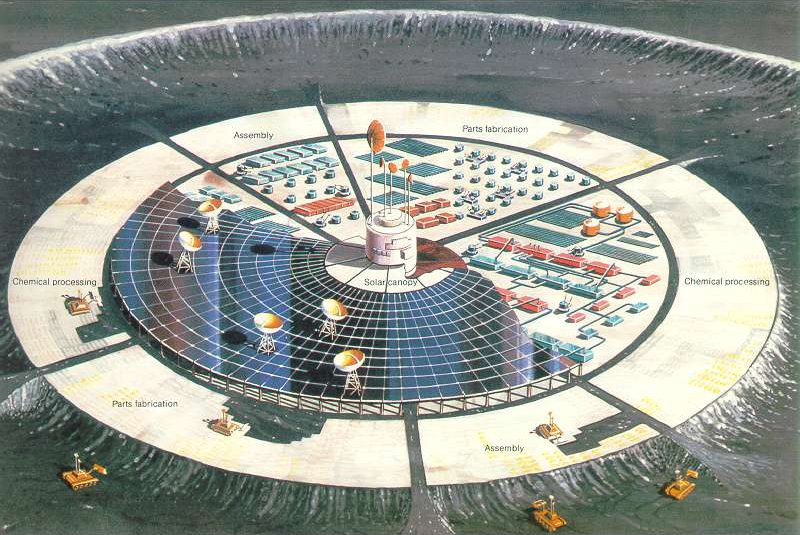
A plan for an organically growing moon base, made of self-replicating parts
The central idea was to construct a robot able to make copies of itself
If the robot could make copies of itself out of fairly raw materials, then it could replicate itself quickly in space
The Mathematics of Self-Replication
This is going to occupy a central part on this course
Most interestingly, he found the question to be related (the proof of Gödel's incompleteness theorem) and to computability theory
This led him to design a self-reproduction scheme based on Turing machines
For this, he invented the concept of Cellular Automaton (plural: Cellular Automata; abbreviation CA)
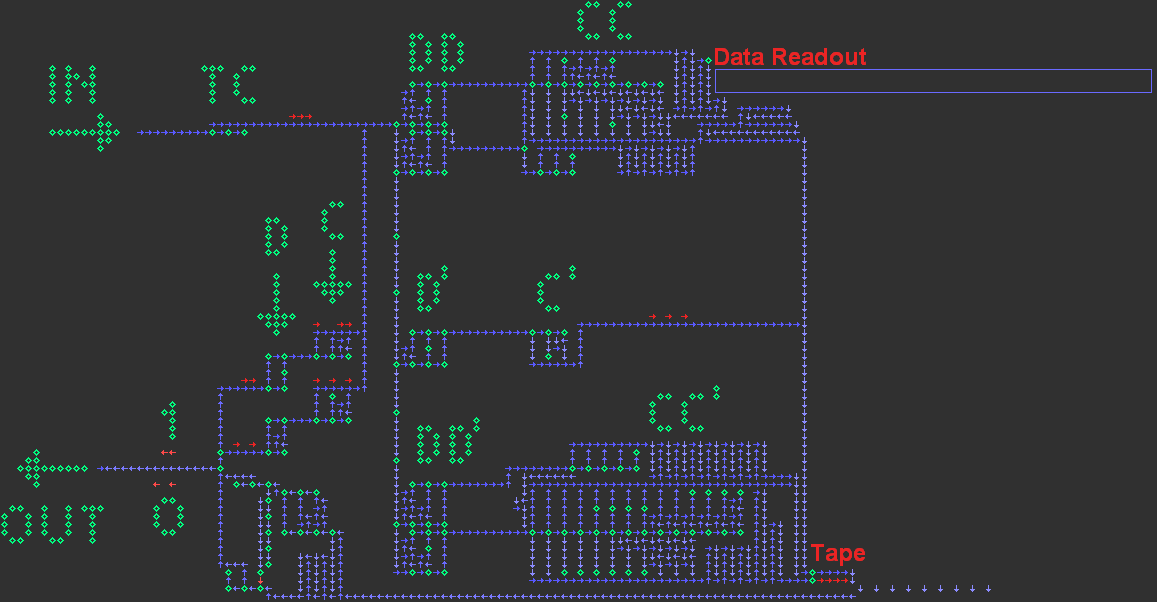
He built a cellular automaton with a reading head reading some 'genetic code', before DNA was actually discovered!

What is Alife?
What are the direct goals of Alife?
•
To tell us something about life (how it works, when it emerges, where it can go)
•
To tell us something about the kind of life forms we may end up creating (intentionally or not)
•
To tell us something about how what forms of life may exist elsewhere in the universe?
What are indirect goals of Alife?
•
To create artificial universes that inspire us (in science, engineering, or art), either because they are beautiful, or because they are interesting solutions to nontrivial problems
•
To create an interesting ground for artificial intelligence problem (simulated universes, synthetic data, etc.)
•
To develop new research methodologies mixing ideas of math, art, hacking
Some early dreams about Alife: Reproduction
Do you say that beasts are machines just as watches are? Put a male dog-machine and a female dog-machine side by side, and eventually a third little machine will be the result, whereas two watches will lie side by side all their lives without ever producing a third watch
B. De Fontenelle, 1683
And so if this sentient and animated harpsichord was now endowed with the faculty of feeding and reproducing itself, it would live and, either on its own or with its female partner, give birth to little harpsichords, living and resonating.
D. Diderot, 1769
... [the watch] possessed the unexpected property of producing, in the course of its movement, another watch like itself . . . That it contained within it a mechanism, a system of parts, a mould for instance, or a complex adjustment of laths, files, and other tools, evidently and separately calculated for this purpose...
William Paley, 1802
Nay, further, the Machine, like Paley’s watch, might make others like itself. We thus get hereditary and accumulated instinct. For these descendants, as they may be called, may vary slightly, owing to accidental circumstances, from the parent. Those which were most suited to the environment would supply themselves most easily with fuel, etc. and have the greatest chance of prolonged activity. The principle of natural selection, which indeed involves only purely mechanical agencies, would thus be in full operation
Early dreams about Alife: Evolution
For man at present believes that his interest lies in that direction; he spends an incalculable amount of labour and time and thought in making machines breed better and better... and there seem no limits to the results of accumulated improvements if they are allowed to descend with modification from generation to generation.
Thus this planet may be filled with beings who will be blind and deaf as the inmost rock, yet will execute changes as delicate and complicated as those of human language and all the intricate web of what we call its effects, without sensitive impression, without sensitive impulse: there may be, let us say, mute orations, mute rhapsodies, mute discussions, and no consciousness there even to enjoy the silence
Alfred Marshall, 1867
Samuel Butler, 1872
George Eliot, 1879
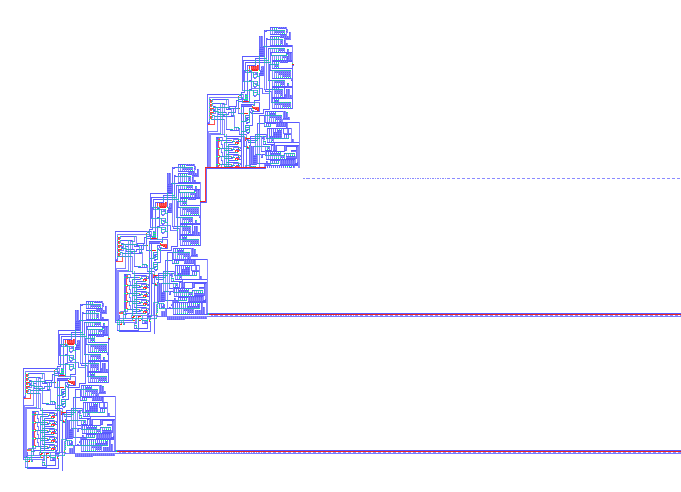
Clément Hongler & Vassilis Papadopoulos
www.hongler.org
www.vassi.life
The study of simple models that aim at capturing certain interesting processes of life (resilience, growth, reproduction, evolution, metabolism...)
Big Open Problems / Questions with Alife
•
Open-Ended Evolution: Create a system that generates an endless stream of evolution / innovations, like what evolution does on Earth
•
Question of Emergence: There are things that we can design, and things that emerge spontaneously... what can we say about this?
Intuitively: we need a robot that can pick up pieces around it, assemble them... for this it would probably need a computer, and the computer would need to orchestrate sensors, motors, etc. to perform the required assembly tasks... probably also to 'hunt' for the parts
... but too complicated for now... so make it happen in a 'mathematical medium'... delicate balance between 'life-friendliness' and 'naturality'
... he invented cellular automata!
A CA is a dynamical system of states assigned to e.g. the vertices of e.g. a grid e.g. , where typically the set of possible states for each vertex is the same and is finite
Typically a CA is running in discrete time and each time, each state is updated according to the current values of itself and its neighbors (can be 4 neighbors, 8 neighbors, or other things)
Even if we restrict to 8 neighbors, 2D, 2 states, we have possible rules, where ()
Von Neumann designed a cellular automaton with 29 states per vertex, and where each vertex interacted with its 4 direct neighbors
And then he attempted to design a universal self-replicator configuration in it
This construction was very complicated, and in some sense only sketched on paper by Von Neumann (it had more than 200000 cells)
Next Time: We will explain this construction
(Von Neumann's construction actually highlighted what DNA in the end is, before it was understood what DNA is)
Goals for the next lectures
•
Understand self-replication in various settings
•
Understand emergence of complexity in particular in cellular automata
•
Understand how discrete structures can emerge from continuous media and vice versa
•
Understand how evolution can be modeled and kept track of
•
Understand the implementation challenges of the models
•
What was the meaning of all the things done so far? What are the values of each piece to the big picture
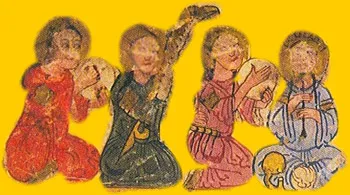


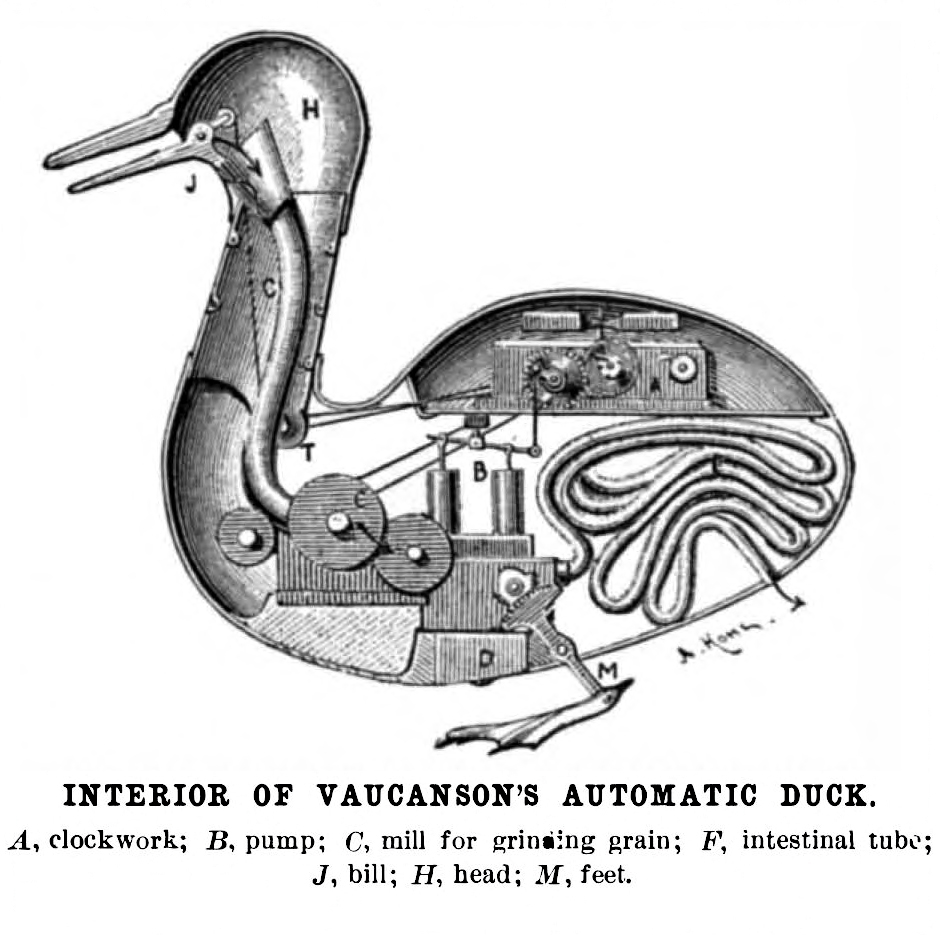
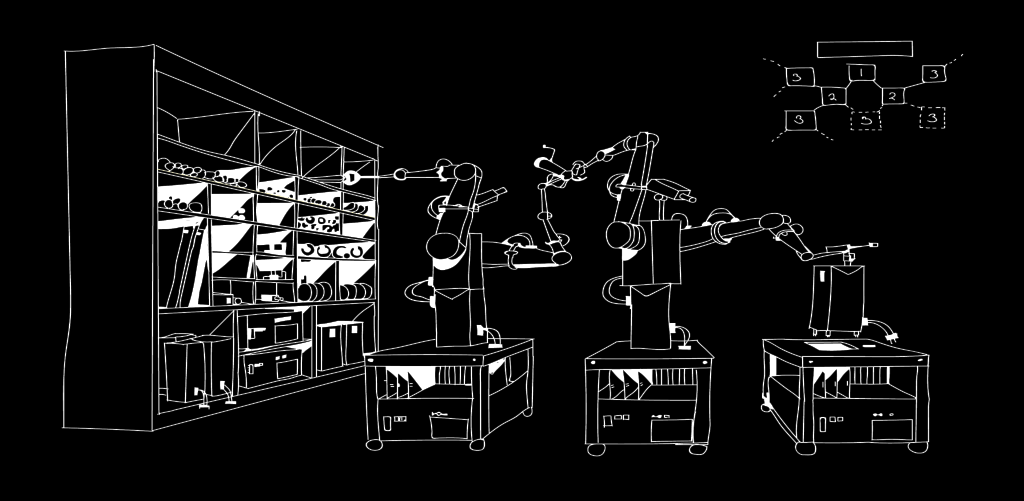
.